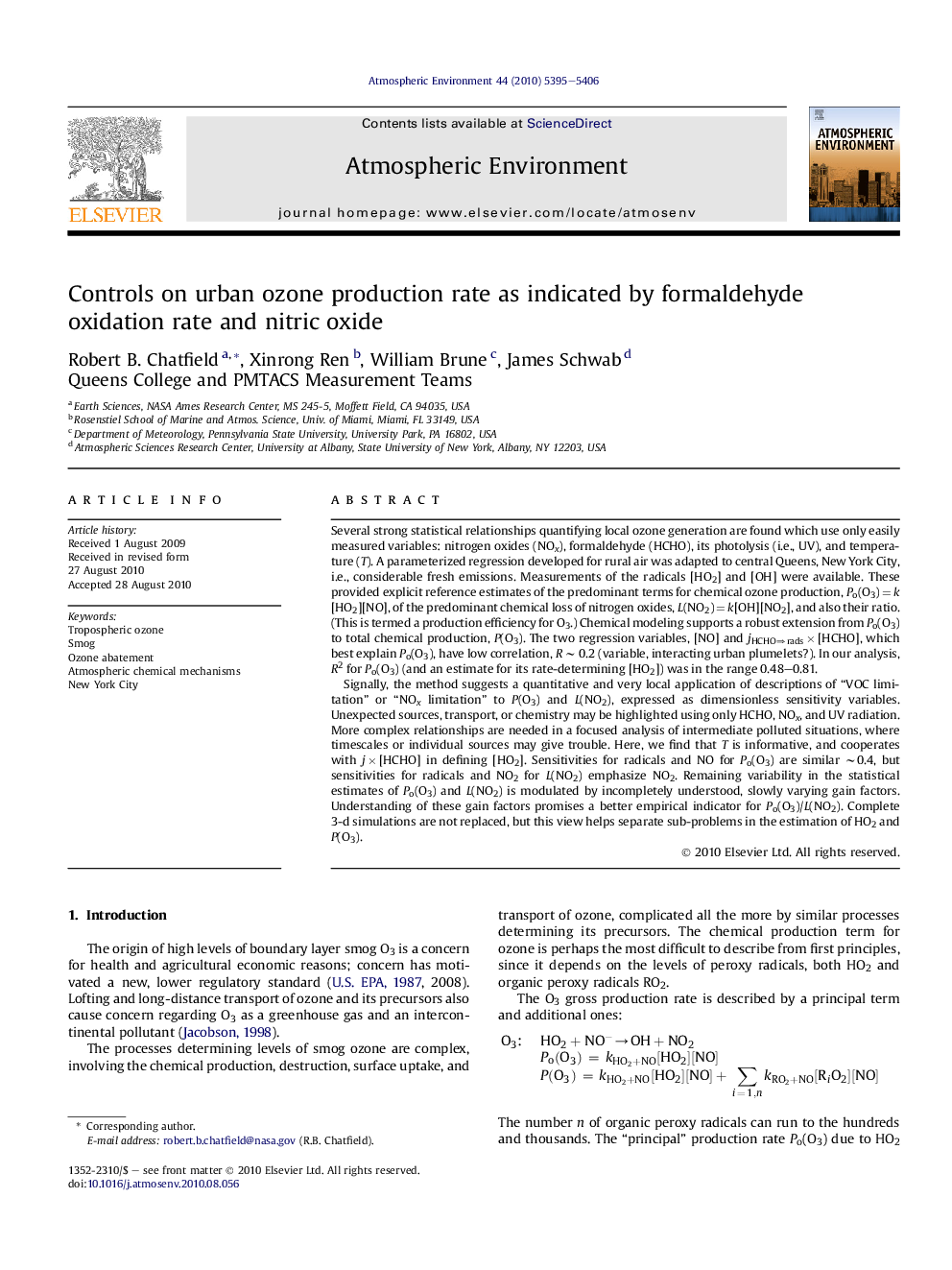| کد مقاله | کد نشریه | سال انتشار | مقاله انگلیسی | نسخه تمام متن |
|---|---|---|---|---|
| 4440319 | 1311055 | 2010 | 12 صفحه PDF | دانلود رایگان |

Several strong statistical relationships quantifying local ozone generation are found which use only easily measured variables: nitrogen oxides (NOx), formaldehyde (HCHO), its photolysis (i.e., UV), and temperature (T). A parameterized regression developed for rural air was adapted to central Queens, New York City, i.e., considerable fresh emissions. Measurements of the radicals [HO2] and [OH] were available. These provided explicit reference estimates of the predominant terms for chemical ozone production, Po(O3) = k[HO2][NO], of the predominant chemical loss of nitrogen oxides, L(NO2) = k[OH][NO2], and also their ratio. (This is termed a production efficiency for O3.) Chemical modeling supports a robust extension from Po(O3) to total chemical production, P(O3). The two regression variables, [NO] and jHCHO⇒rads × [HCHO], which best explain Po(O3), have low correlation, R ∼ 0.2 (variable, interacting urban plumelets?). In our analysis, R2 for Po(O3) (and an estimate for its rate-determining [HO2]) was in the range 0.48–0.81.Signally, the method suggests a quantitative and very local application of descriptions of “VOC limitation” or “NOx limitation” to P(O3) and L(NO2), expressed as dimensionless sensitivity variables. Unexpected sources, transport, or chemistry may be highlighted using only HCHO, NOx, and UV radiation. More complex relationships are needed in a focused analysis of intermediate polluted situations, where timescales or individual sources may give trouble. Here, we find that T is informative, and cooperates with j × [HCHO] in defining [HO2]. Sensitivities for radicals and NO for Po(O3) are similar ∼0.4, but sensitivities for radicals and NO2 for L(NO2) emphasize NO2. Remaining variability in the statistical estimates of Po(O3) and L(NO2) is modulated by incompletely understood, slowly varying gain factors. Understanding of these gain factors promises a better empirical indicator for Po(O3)/L(NO2). Complete 3-d simulations are not replaced, but this view helps separate sub-problems in the estimation of HO2 and P(O3).
Journal: Atmospheric Environment - Volume 44, Issue 40, December 2010, Pages 5395–5406